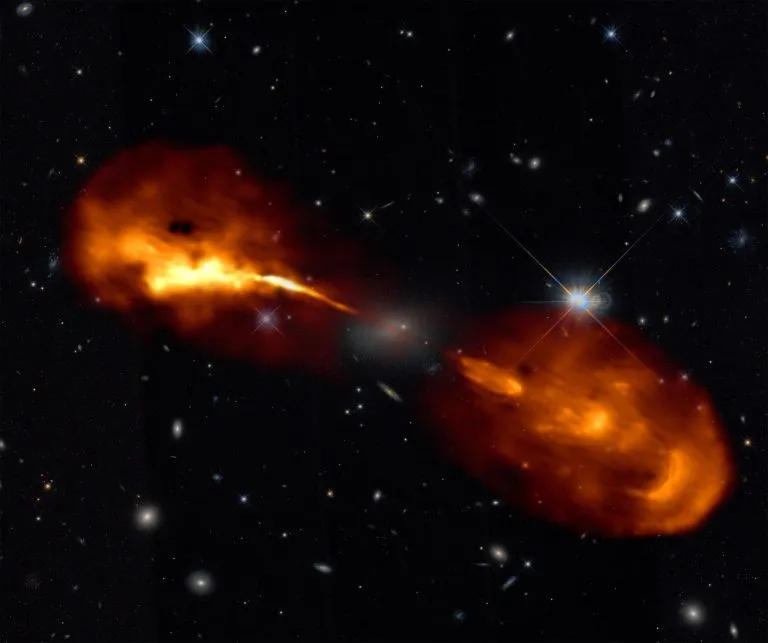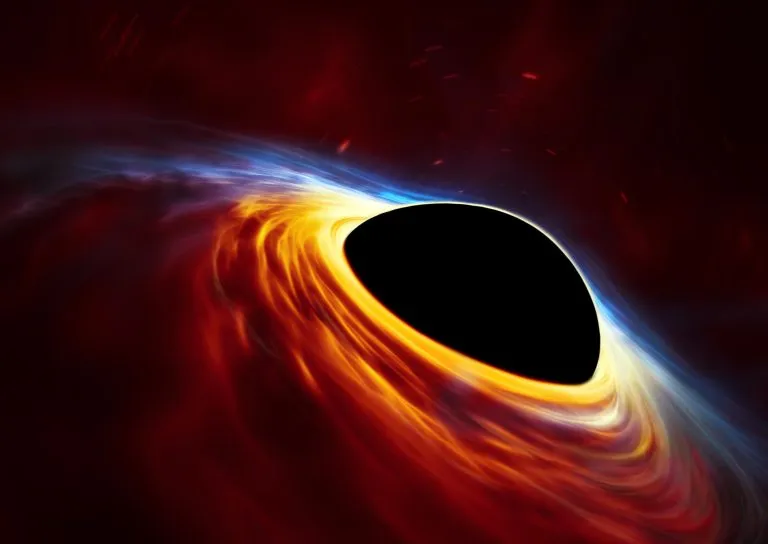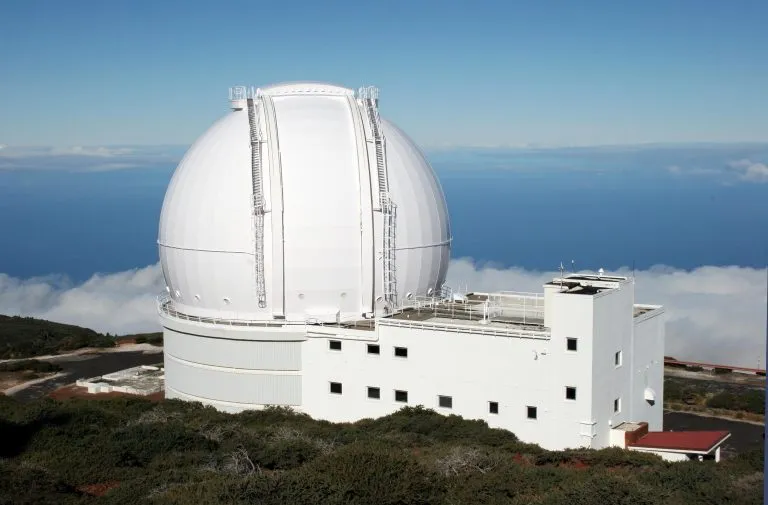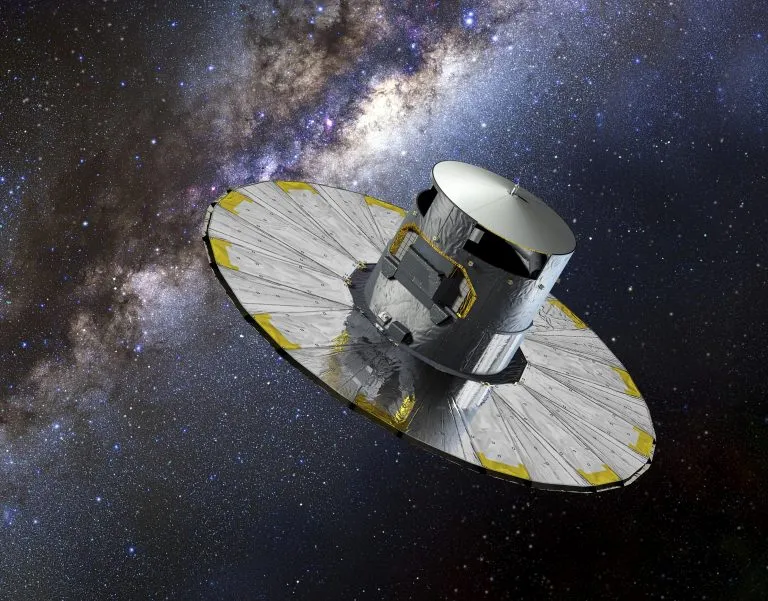A deeper understanding of black holes may revolutionize scientists' understanding of physics, but their mysterious nature makes them difficult to observe. As the theory of gravity is broken near black holes, detailed observation can make a breakthrough in people's understanding of physics Upgraded telescopes, improved instruments and artificial intelligence can help people study these "monsters" of the galaxy

The weirdness of black holes is puzzling. Black holes form when stars burn all their nuclear fuel and collapse under their own gravity. They are so strange that even Einstein once thought they were impossible.
They are such strong gravitational regions in space that even light cannot escape their traction. Once the magnificent and shining stars burn out and shrink into a relatively small shell, all their mass is concentrated in a small space. Imagine our sun, whose diameter is about 1.4 million kilometers, shrinking to a black hole only 6 kilometers in diameter. This compactness gives the black hole a huge gravitational pull.
Black holes can not only capture light, but they can also smash any star they encounter and even fuse with each other. Events like this release bursts of energy that can be detected billions of light-years away.
The Nobel Prize in physics in 2020 was shared by scientists who discovered an invisible object in the center of the Milky Way galaxy that pulls stars towards it. This is a supermassive black hole, or SMBH, which has millions of times the mass of our sun.
Dr Kenneth Duncan, an astrophysicist at the Royal Observatory in Edinburgh, UK, said: "at the center of every massive galaxy, we believe that there is a supermassive black hole. We also believe that they play a very important role in the formation of galaxies, including the Milky way."

Galaxy "monster"
Supermassive black holes are gravitational "monsters" in the universe. Professor Philip best, an astrophysicist at the University of Edinburgh, said: "the mass of the black hole in the center of the galaxy may be one million to several billion times that of our sun."
They suck in gas and dust from their surroundings, and even objects as big as stars. Just before these substances fall into the event horizon of the black hole, they move rapidly and heat up, releasing energy in the form of high-energy flashes. A powerful jet of material that emits radio waves may also be ejected from this ingestion process.
These can be detected by radio telescopes on earth. For example, LOFAR in Europe has detectors in Britain, Ireland, France, the Netherlands, Germany, Sweden, Poland and Latvia.
Duncan is using LOFAR observations to identify massive black holes in a project called hizrad. "We can detect older, growing black holes," Duncan said. "The goal is to find the earliest and some of the most extreme black holes in the universe."
LOFAR can even accurately locate the obscured black hole. Duncan has used artificial intelligence technology to combine data from LOFAR and telescope surveys to identify objects of interest.

Better instruments
Better instruments will soon assist in this task. The upgrade of the William Herschel telescope in La Palma, Spain, will enable it to observe thousands of galaxies at the same time. A spectrometer called weave has the potential to detect supermassive black holes and observe the formation of stars and galaxies.
Radio signals show that supermassive black holes existed as early as the first 5-10% of the history of the universe. Best, the research director, explained that these black holes have a billion solar masses.
Surprisingly, these "Big Macs" existed in the early stage of the universe. "In the history of the universe, you have to put all these masses into a very small volume and do it very quickly," best said.
Researchers know that after the big bang, the universe began to become an expanding mass of primitive matter. The study of the cosmic background radiation shows that the final mass of matter gathered together to form stars. However, "the process of forming a black hole as large as 1billion solar masses is not fully understood," best said.
Intermediate mass black hole
Although the research on super large black holes is in progress, Dr. Peter Jonker, an astronomer at the University of ladburg in Nijmegen, the Netherlands, is very interested in the formation of medium-sized black holes.
He is studying the possible existence of intermediate mass black holes (imbh) through the imbh project. He pointed out that supermassive black holes have been observed since the universe was only 600million years old. Scientists estimate that the overall age of the universe is about 13.8 billion years.
Jonker said, "the universe was like a uniform 'soup of matter' at the beginning, so how did you get a mass of a billion times the mass of the sun in a very short time?"

Although supermassive black holes may devour all the stars like the sun (called white dwarfs), IMBHs should be strong enough to tear them apart and emit conspicuous energy flashes.
"When a compact star, a white dwarf, is torn apart, it can only be torn apart by a medium mass black hole," Jonker said. "Supermassive black holes devour them all. There are strong indications that medium mass black holes are there, but there is no evidence yet."
He is looking for strong X-ray energy flashes to indicate the existence of intermediate black holes. The problem is that when a signal is detected, the strong flash lasts only a few hours. This means that the data arrive too late to turn the optical telescope to the light source for observation.
"This happens only once every galaxy in 10000 years, so we haven't seen one in our galaxy yet," Jonker said
Jonker also tried to observe the expected results of the rotation and merger of the two black holes, and then sent out gravitational waves to hit nearby stars. However, identifying these bumped stars requires powerful space-based telescopes.
X-ray scintillation
The Gaia satellite launched in 2013 is providing some help, but a planned mission called Euclid will take higher resolution images and may help Jonker prove the existence of IMBHs. The satellite was originally scheduled to be launched by a Russian rocket; It will now be launched by the European Ariana 6 rocket, but with a slight delay.
Nevertheless, a small satellite -- China's leading Einstein probe satellite -- is scheduled to launch in 2023 and will look for flashes of X-ray energy that may mark a medium mass black hole. Duncan of Edinburgh says the search for intermediate mass black holes is linked to his own exploration. "It may help us solve the problem of where supermassive black holes come from," he said
Physicists now rely on quantum theory and Einstein's equations to describe how the universe works. However, these cannot be the last words because they cannot be combined well.
"Gravitational theories collapse near black holes, and if we look at them closely enough," Jonker said, "our expectation is that we will find deviations from the theory and make important progress in understanding how physics works."